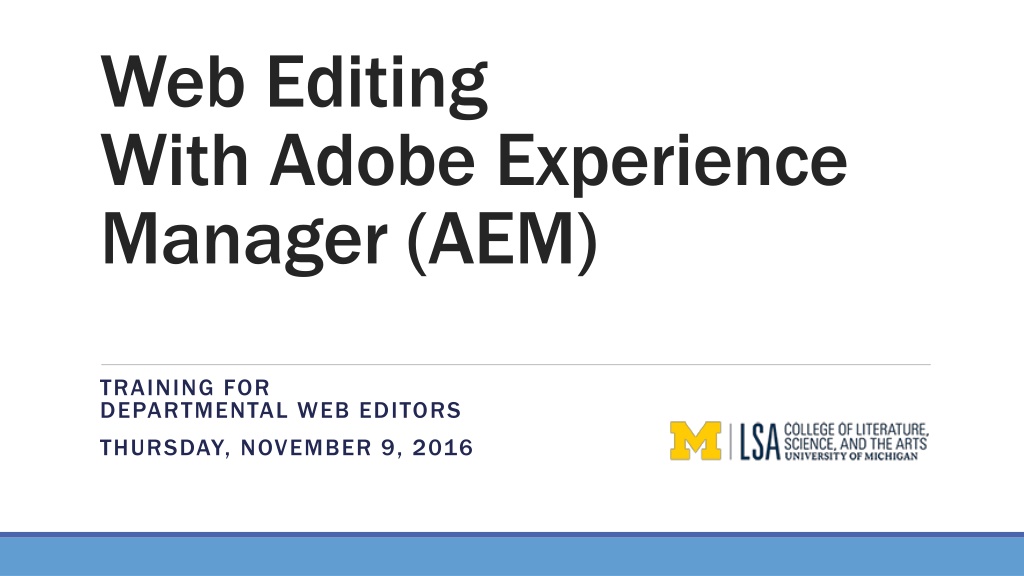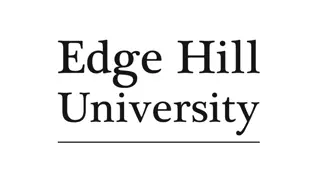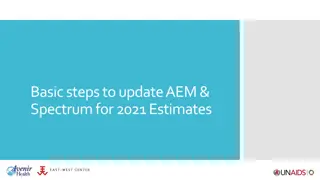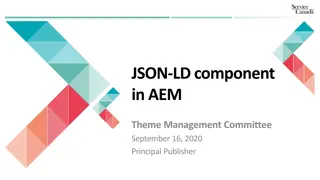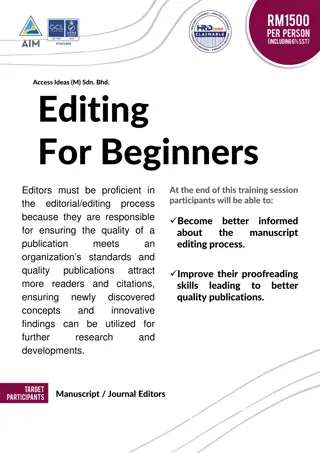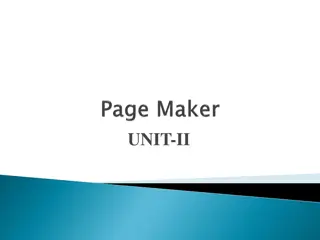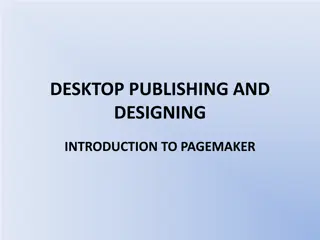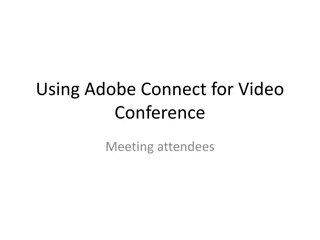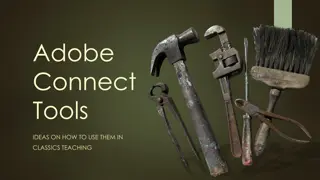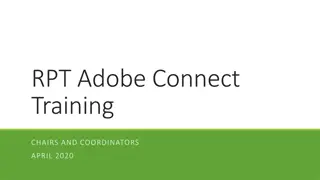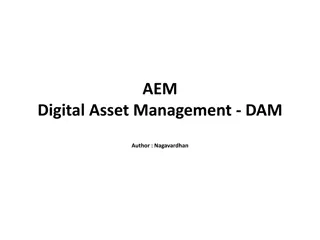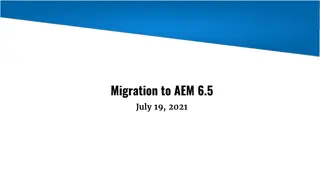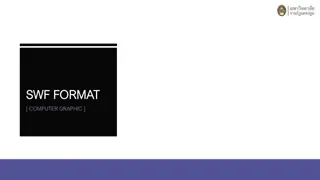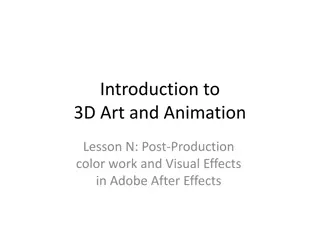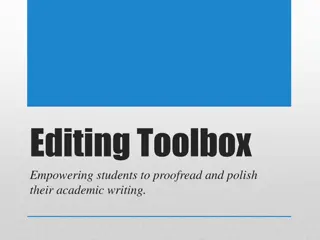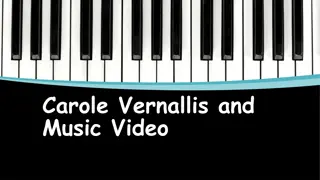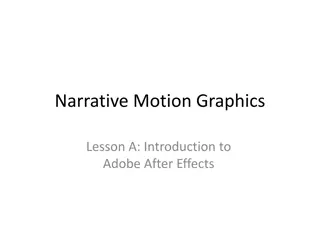Enhancing Web Editing Skills with Adobe Experience Manager (AEM) Training
This training session on November 9, 2016, focuses on empowering departmental web editors with essential skills in Adobe Experience Manager (AEM). Participants will learn to log in securely, navigate the AEM interface, create new navigation and webpages, utilize various components, add content like News, People, and Events, manage activation and deactivation, and understand versioning. Web Services support is available with online documentation, open labs, and hands-on assistance. Understanding audience goals and needs, supported by terminology overview of AEM user interface features, will optimize web content for effective communication.
Download Presentation

Please find below an Image/Link to download the presentation.
The content on the website is provided AS IS for your information and personal use only. It may not be sold, licensed, or shared on other websites without obtaining consent from the author. Download presentation by click this link. If you encounter any issues during the download, it is possible that the publisher has removed the file from their server.
E N D
Presentation Transcript
Web Editing With Adobe Experience Manager (AEM) TRAINING FOR DEPARTMENTAL WEB EDITORS THURSDAY, NOVEMBER 9, 2016
At the conclusion of this training session you will be able to: At the conclusion of this training session you will be able to: Login to AEM, through a secure portal (UM Shibboleth Web Login). Know how and where to locate your web editing interface(s) in AEM. Understand the navigational scheme of your website in AEM. Know how to create new navigation on your site, both audience-based (homepage) and within your site. Know how to create a new webpage in AEM. Know how to build a page utilizing a variety of AEM components. Understand the steps to adding News, People and Events to your site. Understand activation and deactivation (publishing and unpublishing). Understand versioning in AEM.
Web Services is Here for YOU Your job as a web editor Your job as a web editor - - regardless of whether it s 10% of your role or 79% regardless of whether it s 10% of your role or 79% of your role of your role - - is EXTREMELY important to your department s success. is EXTREMELY important to your department s success. lsa.web.support@umich.edu - Help Desk lsa.umich.edu/webservices: Our AEM site with Online Help Documentation. Open Labs Open Labs 2x per week, right here. Hands-on support by Web Services team. Please sign up on the AEM Support/Open Lab section of our website.
People come to web sites to satisfy goals answers to questions answers to questions. satisfy goals, to do tasks, to get Navigation, search, design, and technology support the content that people come for. Janet Redish Letting Go of the Words Know Thy Audience Know Thy Audience Many of you are Student Services Veterans. You ve answered the same questions hundreds of times. Some of the best thinking on the subject of writing for the web writing for the web is found in Janice Redish s book Letting Go of the Words the Words. . Redish shares many of the most important truths about web content in her summary of Chapter 1 ( Content! Content! Content! ) Are those questions answered on your current site? Letting Go of Are there new questions that will emerge as a result of new programming? Understanding WHY your audience comes to your site will help you select and organize the content so that it best meets both your goals and theirs. REMEMBER REMEMBER: In many case, students and other web users are coming to your website to replace the act of making a phone call/have a conversation.
Terminology Overview: AEM User Interface The AEM user interface combines the advantages of a web interface with the fluidity and responsiveness usually associated with desktop applications. AEM employs the following features Web Content Manager Console: Web Content Manager Console: The Web Content Manager (WCM) presents a consistent "explorer-like" interface (similar to Open Text s App Console, but better). For example, the WCM console (referred to in this documentation as the Site Administration Interface) features a two-pane interface with a dynamic expandable/collapsible tree on the left and a grid with draggable rows and columns on the right. Sidekick: Sidekick: A floating window that appears on the inside of a page in the on-page editing interface from which you may add new components or execute page actions. Content Finder: Content Finder: On the left side of each page in the on-page editing interface, this pane provides quick access to digital assets such as images and documents as well as other pages of your site. Assets can be dragged on to your page after a component is created. On On- -Page Editing: Page Editing: Components can be edited directly on the webpage. Drag and drop: Drag and drop: Columns and other components, including digital assets can be positioned on the page simply by dragging and dropping them in the desired location. Contextual menu: Contextual menu: Right clicking on most onscreen elements brings up a context menu with appropriate action options; similar to a desktop OS interface.
Some Thoughts about Roles Some Thoughts about Roles AEM is designed for multiple users who may, if desired, have differing levels of responsibility. *One of the main reasons for assigning content management roles within a department is to help with SEO SEO (Search Engine Optimization (Search Engine Optimization). The Internet looks for Organized and Labeled content, which means content that is tagged with metadata (titles, keywords, descriptions, etc.). Having one or two people thinking about this and executing it, is a REALLY GOOD IDEA REALLY GOOD IDEA.
AEM Roles Site Administrator Site Administrator Website Managers who are comfortable editing site configuration (Chapter 3). Please assign this role to the person in your dept. most comfortable with web software. Content Authors Content Authors Build pages. Set up/design/manage content. Restricted to your own departmental site(s), will not see any other departments content listed, just what you have permission to see. DAM Admin (Highly Recommended) DAM Admin (Highly Recommended) Manage all Media assets for site (images, documents, audio, video). Ensure metadata added to all DAM content. When metadata well managed, authors can more easily locate content based on needs, and internet searches can more easily return your content at the top of results pages. Similar to tag admins, DAM admins manage and categorize content.
Getting to Know the AEM Environment As an author in the AEM web environment, you will access your website in what we call the Production" Environment @ author.lsa.umich.edu author.lsa.umich.edu Notice the only difference between your AEM and Open Text editing sites is the word Author of the URL. Feel free to bookmark this page bookmark this page, just as you did your edit.lsa.umich.edu page in Open Text. Author at the start The first time you navigate to your site address, you will be presented with the now familiar Shibboleth WEBLOGIN that indicates AEM is part of the University of Michigan IT infrastructure.
